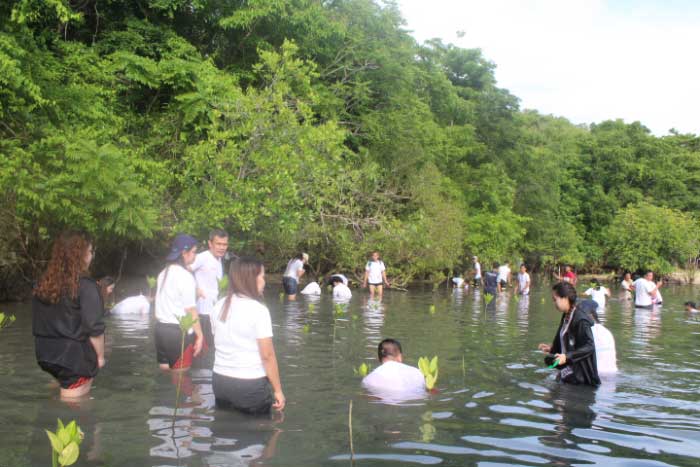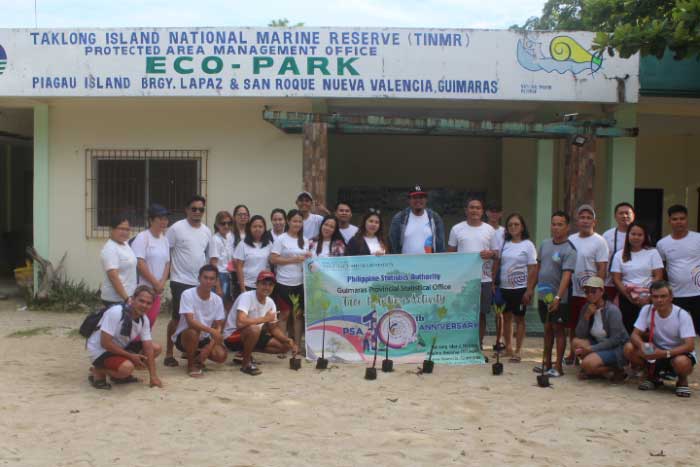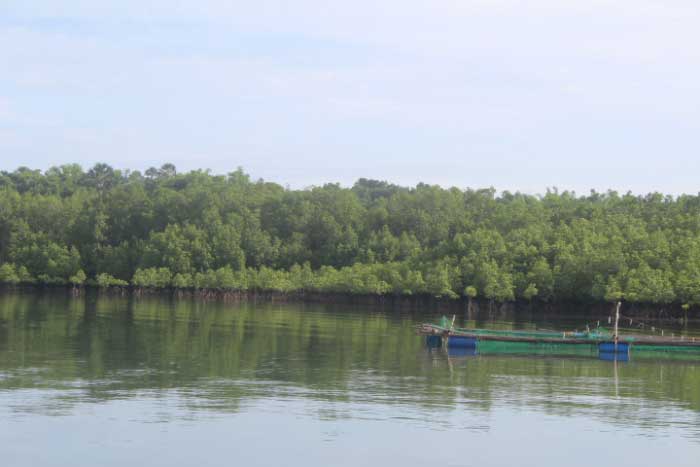The Philippine Statistics Authority (PSA) Guimaras Provincial Statistical Office returned to the Taklong Island National Marine Reserve (TINMAR), a national marine protected area in the Island province, on June 25, 2023 for another round of mangrove planting efforts.
The activity is in support of the simultaneous tree-planting activity of the Philippine Statistics Authority (PSA) as part of its 10th-anniversary celebration this year that is themed “PSA@10 Providing Quality Services through Digital Transformation,” and taglined: “A decade of relevant statistics, efficient civil registration services, and inclusive identification system.”
“Each PSA Guimaras staff is required to plant not less than 10 mangrove seedlings under the supervision of the Department of Environment and Natural Resources (DENR)-Guimaras personnel, Jhonnys Entrina Gange,” Provincial Statistics Officer Nelida B. Losare said.
Mr. Gange conducted a briefing about the dos and don’ts of planting mangroves to ensure their high survival rate.
“These mangroves specie, we called it Bakhaw, and we chose the Bato variety because this is the best-suited mangrove to be planted in this area,” Gange said.
Gange further explained that Bakhaw’s scientific name is Rhizophora Stylosa. With medium-sized leaves, these grow to around 4-20 meters, most easily distinguishable by their exposed root system and their long, slender, pointed propagules.
“These can be planted in inland mangrove areas, riverine or near-shore areas (at the mouth of rivers). Ideal for planting in the deeper, central portions of reverted ponds with 1-2 feet of water at high tide,” Gange said.
Gange also expounded during his briefing that the Bakhaw is ideal for mud or sandy mud and will grow in areas constantly submerged (1-2 feet of water) or on land regularly flooded by tides.
He also briefed PSA Guimaras participants about the proper planting of Bakhaw, in which the planting propagules are placed directly into the mud (no need to nurse).
“Make sure the propagules are firmly in place, with 6-8 inches buried in the mud, but with the tips still above the surface of the water. Ideal for areas prone to erosion as the root systems are good soil catchers/buffers to tides. Can be planted in clusters, with propagules 2-3 meters apart,” Gange said.
He also added an important reminder to never plant in seagrass beds (although they may thrive there, these will eventually kill off the sea grasses, causing a further imbalance of the coastal ecosystem).
Likewise, Losare appreciated the cooperation of the DENR, especially for the provision of planting materials and specific areas, which contributed to the successful conduct of the event.
“We are thankful for the unwavering support of the DENR, especially for this mangrove planting activity, and we are proud that we are one on their campaign in protecting coastal and protected areas on the island of Guimaras,” Losare said.
The PSA Guimaras also got the chance to visit the area planted two (2) years ago on the other side of the marine protected area, wherein the mangroves had grown taller and healthier, which gives joy and fulfillment in our hearts that we have contributed in the protection of the mother earth.



























